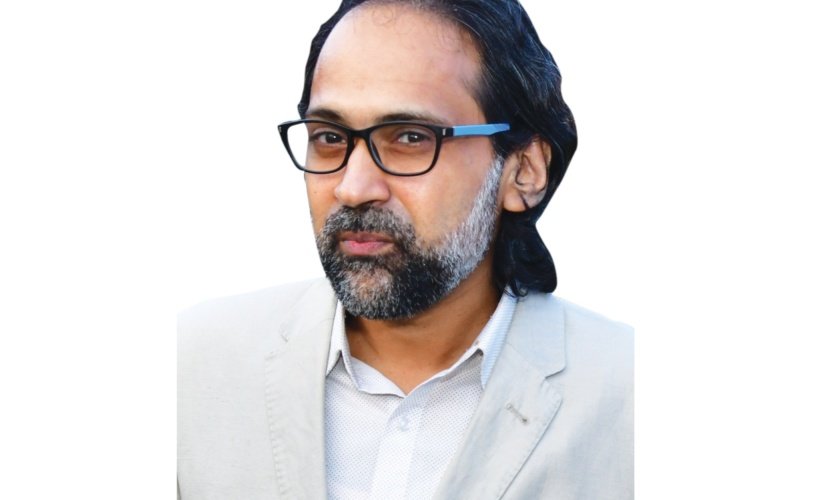
WEALTH WISE / R SHANKARNATHAN
The author throws light on goal setting, which is the first component of financial planning

There is a famous part of the immortal classic, Alice in Wonderland in which Alice asks the Cheshire cat ‘Which road do I take?’
“Where do you want to go?” asks the cat.
“I don’t know,” Alice answers.
“Then,” said the cat, “it doesn’t matter which road you take.”
This clearly highlights that before we undertake any journey it is crucial to know where we want to go and what we wish to achieve. With respect to our financial journey as well, we do need to ascertain what our financial goals are.
As a wealth advisor, I am often asked for views / suggestions on good investment avenues. However, I maintain that the key is to first identify ‘where we want to go’ as investors.
A financial plan is defined by Investopedia as ‘a document containing a person’s current money situation and long-term monetary goals, as well as strategies to achieve those goals.’ A financial plan begins with a thorough evaluation of the person’s current financial state and future expectations and may be created independently or with the help of a certified financial planner.’
To explain in simple words and reminding you of the popular show KBC – if you want to be a crorepati you have to go through certain padaavs or milestones. It is the same with financial planning, if you want to achieve your financial goals you have to look at these 8 milestones or components.
These are:
1. Goal Setting
2. Cash Flow Management
3. Insurance Management
4. Debt Management
5. Investment Planning
6. Tax Planning
7. Retirement Planning
8. Estate Planning
Following a structured approach to financial planning is the key to ensure that our financial goals are met. In this article we will focus on the first component of financial planning which is goal setting. We will focus on the some of the other components in the series, so please do watch this space!
What is Goal Setting?
This is step one of the entire financial planning process. Most of us are in jobs or run businesses – we start the financial year by planning for the coming year – setting goals in the form of the sales that we wish to achieve by unit or value, or that by the number of new customers that we wish to acquire etc.
No business just runs itself without setting goals, even the smallest kirana shop will have a goal of adding more products or hiring a couple of people so that the owner can offer delivery at home facility for the shop’s clients. The list is endless.
Similarly, when it comes to planning for ones finances one needs to set goals. It is not enough to say that I want to save enough for retirement or my child’s marriage. While that is a beginning you also need to see what you wish to achieve and how much you need to save in order to meet those goals.
Setting Goals Right
One of the first things that we learn in the profession or business that we are in is to set SMART goals. The same applies to the world of personal finance too.To recap SMART stands for Specific, Measurable, Achievable, Relevant and Time Bound. This can be best explained with an example:
It is not sufficient to say that ‘I want to retire rich’ or ‘I want my child to get married at a destination wedding overseas’. You will have to convert these into SMART goals.
Using the first example, a better statement could be:
I am 30 years old and I wish to retire at the age of 60 years which is another 30 years away. For living a comfortable retired life, I will need a sum of `5 Crore at the time of retirement. I will need this money for the next 20 years of my life after retirement and I would wish to invest accordingly. My current monthly income is `100000 out of which I can save 30%.
This is a SMART goal, it is very Specific in what needs to be achieved, Measurable since you know the number that you wish to reach, Achievable since you are starting early and can invest right, the amount is achievable and not say `100 crore which will be unrealistic to achieve only with investment. It is Relevant since retirement from work is inevitable and Time bound since the number of years in which to achieve this goal is clearly defined.
Prioritise the Goals
Most of us will have multiple goals in life. Long term ones like retirement (say 10 years +) and short term ones like buying a car (next 2-3 years). Both these goals seem essential, and both will demand separate investments. So which one should you prioritize? And how do you prioritize?
Actually, both the above goals are achievable if the investor is guided in the right manner and creates different portfolios in order to achieve these goals.
However, strategy is often defined as a conscious compromise. If they do need to be prioritised, then the important goals need to be put first. Goals like children’s education and retirement should take precedence over a luxury car or any other expense that does not create an asset.
Windfalls also need to be rightly managed – preferably to close outstanding debt rather than on spending on other short-term needs.
The goals that we identify will also determine other aspects, like our risk approach with respect to the goal and the investment strategy and portfolio will also differ accordingly.
One may adopt a more conservative risk approach to goals like children’s education in the medium term and a more growth/aggressive risk approach for a goal like building wealth for the long-term. It all depends upon the individual’s life circumstances, goals and risk orientation.
A right financial plan – with the goals set SMART-ly and invested and monitored well – will ensure that you face your goals with confidence rather than with apprehension and tension on how to manage the payments and how to create wealth to manage goals and aspirations.





